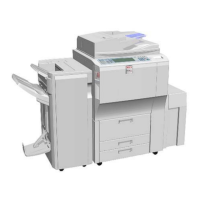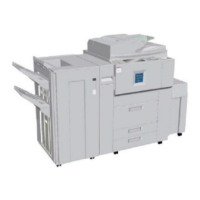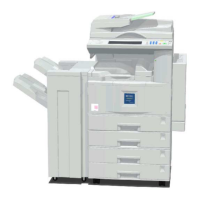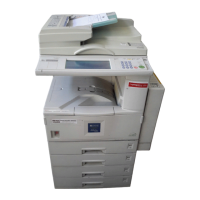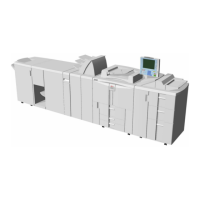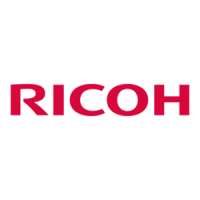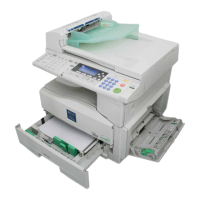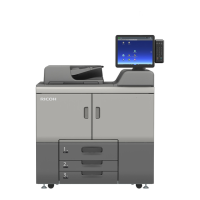IMAGE PROCESSING
B121 Series/B259 Series 6-20 SM
Auto Shading
Overview
There are two auto shading methods: black level correction and white level
correction. Auto shading corrects errors in the signal level for each pixel.
Black and white level correction is always done.
Black Level Correction
The IPU detects the black dummy data from one end of the CCD signal (32 pixels
at the end are blacked off) and takes the average of the black dummy data. Then,
the black level value from each image pixel is detected.
White Level Correction
Previous machines used 8-bit data (256 gradations), but this machine uses 6-bit
data (64 gradations). When white level correction is applied to 8-bit data, white
lines are more easily generated. This is because the normal variations in CCD pixel
response (which are very slight), when rounded off by white level correction, will
show up much easier on the copy when the data is divided into 256 gradations.
Before scanning the original, the machine reads a reference waveform from the
white plate. The average of the white video level for each pixel is stored as the
white shading data in the FIFO memory in the IPU (SCRATCH) chip.
The video signal information for each pixel obtained during image scanning is
corrected by the IPU (SCRATCH) chip. If the maximum value of the video level is
64 or less, SC101 (exposure lamp error) is generated.
Auto shading is done before scanning for the first original as well as after scanning
each page to prepare for the next page.
If the image density or the original mode is changed during a copy run, auto
shading is done before scanning the next original.
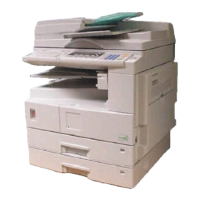
